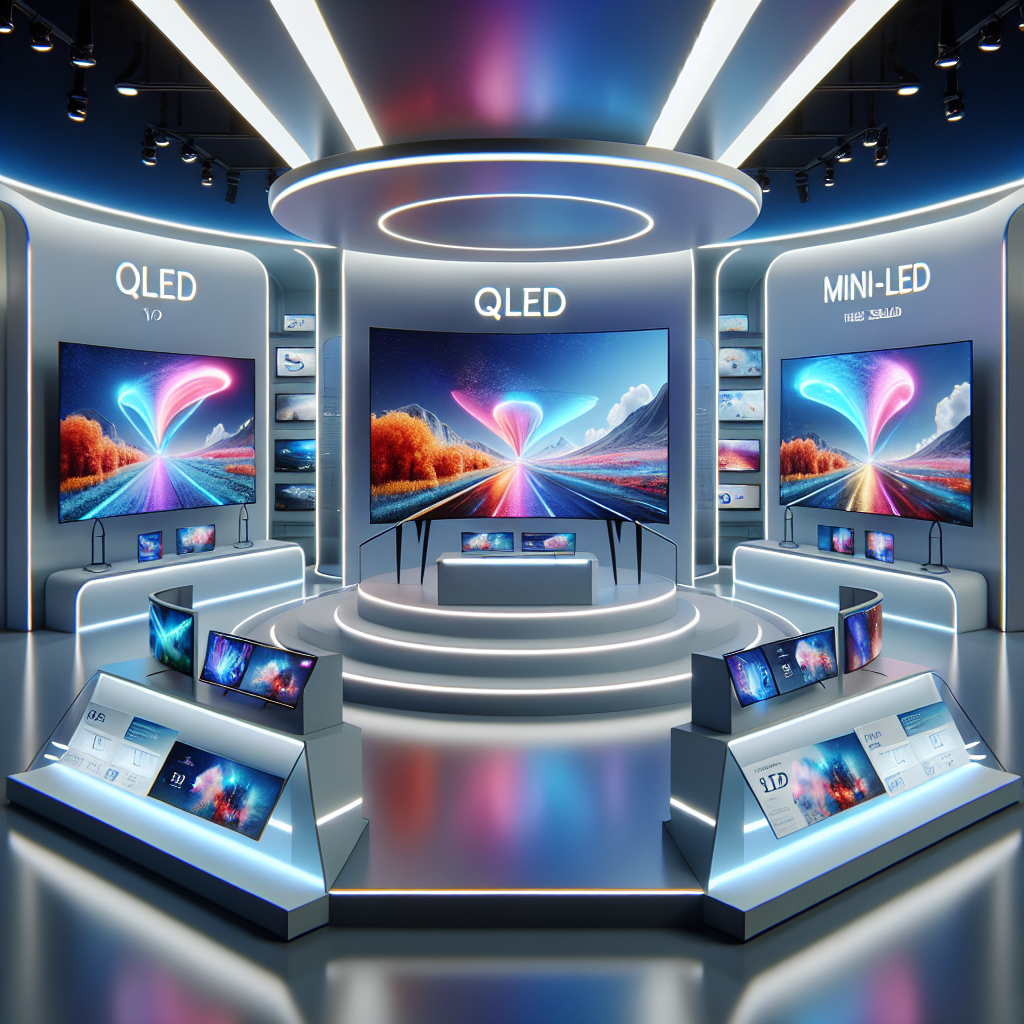Best Smart TVs in 2025: OLED vs. QLED vs. Mini-LED
Introduction
In 2025, the landscape of smart TVs continues to evolve, offering consumers a range of sophisticated options characterized by cutting-edge display technologies. Among the most prominent are OLED, QLED, and Mini-LED TVs, each presenting unique advantages and innovations. OLED TVs are renowned for their exceptional contrast ratios and deep blacks, as each pixel emits its own light, allowing for precise control and a perfect black. QLED TVs, powered by Quantum Dot technology, excel in brightness and color volume, making them ideal for well-lit rooms. Mini-LED TVs represent a significant advancement in backlight technology, providing finer control over dimming zones and thus improving contrast and HDR performance. As these technologies compete and converge, they push the boundaries of picture quality, energy efficiency, and design, shaping the future of home entertainment.
Best Smart TVs in 2025: OLED vs. QLED vs. Mini-LED
In the ever-evolving landscape of home entertainment, the year 2025 has brought with it a dazzling array of smart TV technologies, each promising to transform the viewing experience. Among the frontrunners are OLED, QLED, and Mini-LED TVs, each offering distinct advantages and catering to different preferences and needs. Understanding the nuances between these technologies is key to making an informed decision about which smart TV to invest in.
OLED, or Organic Light Emitting Diode technology, continues to be a favorite for those who prioritize picture quality above all else. Unlike other displays, OLED panels allow each pixel to produce its own light, enabling true blacks and impressive contrast ratios. This capability not only enhances the depth and realism of images but also maintains color accuracy from wide viewing angles. The absence of a backlight reduces the TV’s thickness, resulting in ultra-slim designs that are both aesthetically pleasing and practical for wall mounting. However, OLED TVs tend to be on the pricier side and can be susceptible to burn-in issues, where remnants of static images remain visible on the screen if displayed too long.
Transitioning to QLED, or Quantum Dot LED TVs, these are often seen as a direct competitor to OLEDs. Developed by major manufacturers like Samsung, QLED TVs use a quantum dot layer that enhances the vibrancy and range of colors. The brightness levels achievable with QLED are superior, making them more suitable for well-lit rooms where glare might be a concern. Additionally, QLED screens are more durable and less prone to burn-in compared to their OLED counterparts. They also tend to offer a better price point, providing a more budget-friendly option for consumers looking for high-quality displays without the steep OLED price tag.
Meanwhile, Mini-LED technology is relatively new to the market but rapidly gaining traction. As an advanced form of LCD, it uses thousands of tiny LEDs to form the backlight, resulting in finer control over local dimming zones. This control allows for better contrast and black levels that are comparable to OLED, without the risk of burn-in. Mini-LED TVs can also achieve high levels of brightness and color accuracy, making them a strong contender for HDR content. They strike a balance between the affordability of QLED and the performance of OLED, presenting a compelling option for those who want the best of both worlds.
As we look at the offerings in 2025, it’s clear that the choice between OLED, QLED, and Mini-LED TVs depends largely on individual viewing habits and environmental conditions. For cinephiles and those who crave cinematic quality from the comfort of their living room, OLED might be the preferred choice despite its higher cost and burn-in risks. On the other hand, QLED TVs offer a more cost-effective solution without sacrificing performance, especially in bright environments. Lastly, Mini-LED technology is perfect for those who are looking for a middle ground, offering excellent performance at a reasonable price point.
In conclusion, the best smart TV for any consumer in 2025 will hinge on balancing these factors—picture quality, durability, environment, and budget. Whether it’s the unparalleled depth of an OLED, the vibrant display of a QLED, or the balanced performance of a Mini-LED, the market has matured to a point where there’s truly something for everyone. As technology continues to advance, the gap between these types narrows, promising even more exciting developments in the future of home entertainment.
Conclusion
In 2025, the best smart TVs are defined by three leading technologies: OLED, QLED, and Mini-LED. OLED TVs are renowned for their exceptional contrast ratios and deep blacks, as each pixel emits its own light, allowing for precise control and true black levels. This makes OLED TVs ideal for viewers who prioritize cinematic quality and have controlled lighting environments.
QLED TVs, using quantum dot technology, excel in brightness and color volume, making them suitable for brightly lit rooms. They are more affordable than OLEDs and offer vibrant, saturated colors which remain consistent even at wide viewing angles.
Mini-LED TVs are a newer technology that offer a middle ground between OLED and QLED. They provide better contrast and brightness than traditional LED TVs due to their smaller LEDs and greater number of dimming zones. This results in improved detail in shadows and highlights.
Each technology has its strengths and is best suited for different viewing environments and content types. OLED is top for movie enthusiasts who value image depth and realism, QLED is ideal for those in bright viewing areas who enjoy vibrant colors, and Mini-LED offers a balanced option with superior performance over traditional LEDs at a competitive price point.



